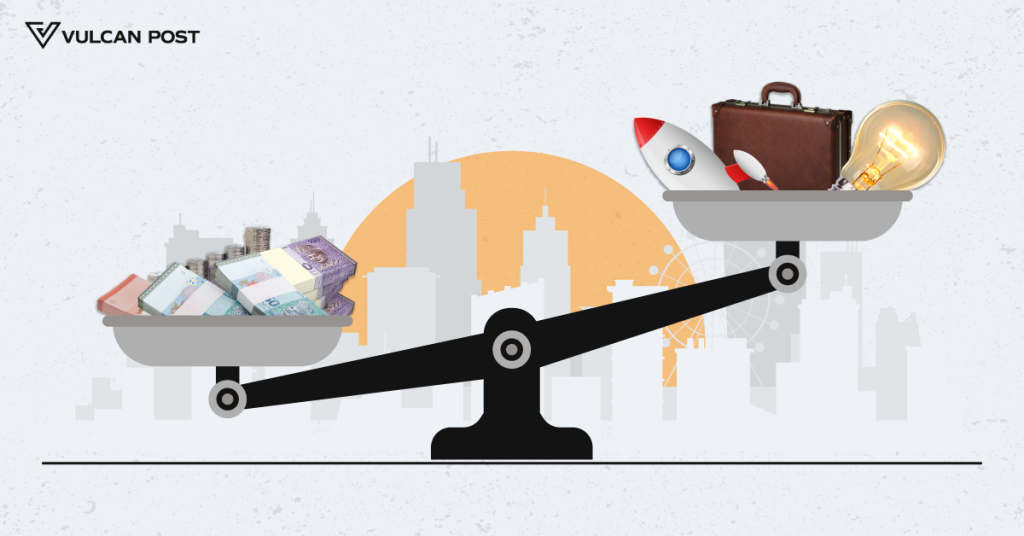While most people know what a unicorn in the startup world means, not everyone actually understands it.
When we say that a startup is a unicorn, it means that the company has a valuation of US$1 billion.
However, a billion-dollar valuation doesn’t mean that the company itself has US$1 billion in the bank ready to use.
Here’s how a company actually arrives at a valuation figure, and who determines it.
It’s different from net worth
The net worth of an individual or company is easy to calculate. You just take all your assets, then minus your liabilities.
Valuation, though, is a little bit different. Valuation can be understood as more of a potential, a measurement of a business’ economic value.
A company’s valuation is useful in situations, especially during funding rounds, sales of shares, as well as taxation purposes.
So, how is valuation calculated?
There are a number of ways that a startup can be valued. According to Investopedia, some ways include market capitalisation, times revenue method, earnings multiplier, discounted cash flow method, book value, and liquidation value.
Market capitalisation is a method typically used for publicly traded companies. Through this method, a company’s valuation is calculated by multiplying the company’s share price by its total number of shares outstanding.
Meanwhile, through the times revenue method, a company’s revenue is applied to a multiplier that is determined based on the industry and economic environment.
An example Investopedia gave was that a tech company may be valued at three times its revenue, whereas a service firm may be valued at 0.5 times its revenue.
The earnings multiplier functions similarly, but instead of revenue, it looks at profits.
The discounted cash flow (DCF) method is based on projections of future cash flow, adjusted to the current market value of the business.
Book value is actually similar to net worth, based on the balance sheet statement of a company by subtracting the total liabilities from total assets.
As its name suggests, liquidation is based on the net cash that a business will receive if its assets were liquidated and liabilities were paid off.
While Investopedia’s breakdown is more digestible for non-accountants, the International Valuation Standards (IVS) has a more official outline of approaches.
It shared that the principal valuation approaches include market approach, income approach, and cost approach.
The valuer will need to determine which approach is the best fit for any given situation. Each approach has various methods.
Market approach involves comparing an asset with identical or comparable (i.e. similar) assets for which price information is available.
Asset here means items that might be subject to a valuation engagement, such as a business.
The income approach provides an indication of value by converting future cash flow to a single current value. (This approach includes the DCF method.)
Lastly, the cost approach uses the economic principle that a buyer will pay no more for an asset than the cost to obtain an asset of equal utility.
But who gets to confirm these valuation numbers? Can you just say that a startup has billion-dollar potential and project its revenue skyrocketing down the road, thus calling it a unicorn?
The answer is obviously no.
Here come the professionals
In the United States, there is such as thing as a business valuation accreditation, or an Accredited in Business Valuation (ABV) designation for accountants who specialise in calculating a business’ value.
Over here in Malaysia, we don’t have an accreditation, but we do have guidelines set by the Malaysian Institution of Accountants (MIA).
According to its website, MIA has issued a Best Practice Guide and Skills Set to Perform Business Valuation Activities in Malaysia 2019, upon the recommendation of its Valuation Committee.
Essentially, the Best Practice Guide says that the International Valuation Standards (IVS) should be used as a guideline, as MIA is an Institutional Member of the IVS Committee.
Some 150 pages long, the IVS gives a very in-depth look at the valuation of assets across the globe, covering things such as methods, ethics, reporting, and more.
Valuation in action
But at the end of the day, what may give a startup the “final valuation” (especially when we’re talking about unicorn statuses) is during funding rounds or during acquisitions (especially full buy-outs).
For example, when Facebook bought Instagram for US$1 billion, that was a clear signifier that Instagram was a unicorn.
Meanwhile, we can consider a local example as well—when Farm Fresh bought a 65% stake in Inside Scoop for RM83.9 million. That means Farm Fresh valued Inside Scoop at around RM129 million.

To make it more digestible, let’s put it this way. Hypothetically, if a company sells a 10% stake for RM10, that means that the company is worth RM100.
This value can change over time, though. If another 10% stake in that same company is sold for RM20, that means the company is now worth RM200. This also means that the first investor’s stakes or shares have now increased in value.
-//-
The point is, people often misconstrue what valuation actually means. Just because a company is valued at a certain amount doesn’t mean it has that much to spend.
It might just be a projection of future cash flow, or because the industry is considered very lucrative, or that there’s a comparable business that’s doing really well.
Furthermore, depending on who’s actually valuing the company and whether they’re following the appropriate guidelines, the valuation may fluctuate a lot.
So, the next time you see a business claiming that it’s valued at a certain amount, you should think about what that number even means, and how they arrived at that number in the first place.
- Read other articles we’ve written about Malaysian startups here.
Featured Image Credit: Vulcan Post











